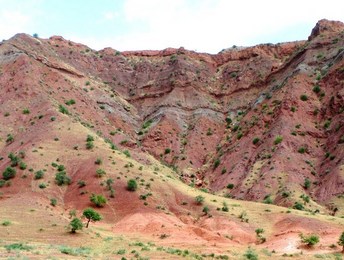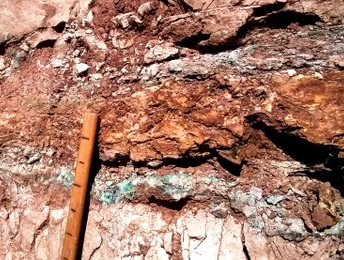09/21/18 At the meeting of the Scientific and Technical Committee of the State Committee for Geology, the following report was considered: “Evaluation of the prospects of the South-Western spurs of the Gissar Range and the Ferghana Depression to identify objects of hydrogenic and stratiform sedimentary genesis” (II quarter of 2015 – III quarter of 2018) with a rating of “excellent” and delivered in SE “Gosgeolfond”
The work was carried out according to the target task: “Assessment of the prospects of Meso-Cenozoic sediments of the southwestern spurs of the Gissar Range and the Ferghana Depression to identify promising areas of ore and non-ore deposits of stratiform sedimentary and hydrogenic genesis”
As a result of the work, lithological-facies and mineralogical-geochemical sections were compiled along the horizons of gold-bearing nodules and copper sandstones. According to them, the thickness and extent of productive horizons are established. Their testing was carried out on cuts and clearing. In addition, a technological sample was selected from the clearing.
According to the compiled reference reflection spectra, promising areas for alluvial gold were identified; gold-bearing nodules, cuprous sandstones, potassium salts; sulfur, carbonaceous schists, carnalite, celestine, bitumen, barite.
Ore mineralization of productive horizons and host rocks is described in detail at all sites. Estimated copyright forecast resources of gold in category P2 and put on the State balance.
The most favorable ore-controlling factor of hydrogenogenic ore formation is a complex structural structure. All prospective sites are located in the Karasan-Karabair zone of reef complexes marking the ancient Effusive Fault.
Ore solutions, from which useful components were released under the influence of reducing agents – bitumen of petroleum origin, are confined to cracks, faults, and overthrusts. The process is associated with the hydrodynamic openness of the system and the beginning of the realization of the potential capabilities of solutions formed in the catagenesis stage.
The author of the report is Lyudmila Ivanovna Dementeyenko, Deputy Head of the Geological Department.




